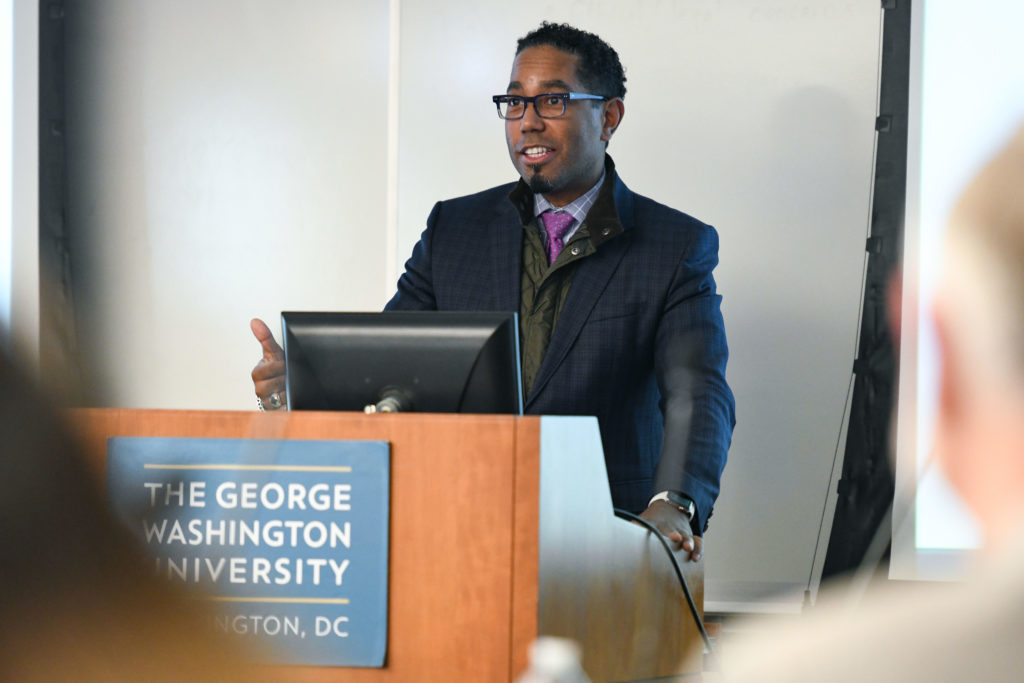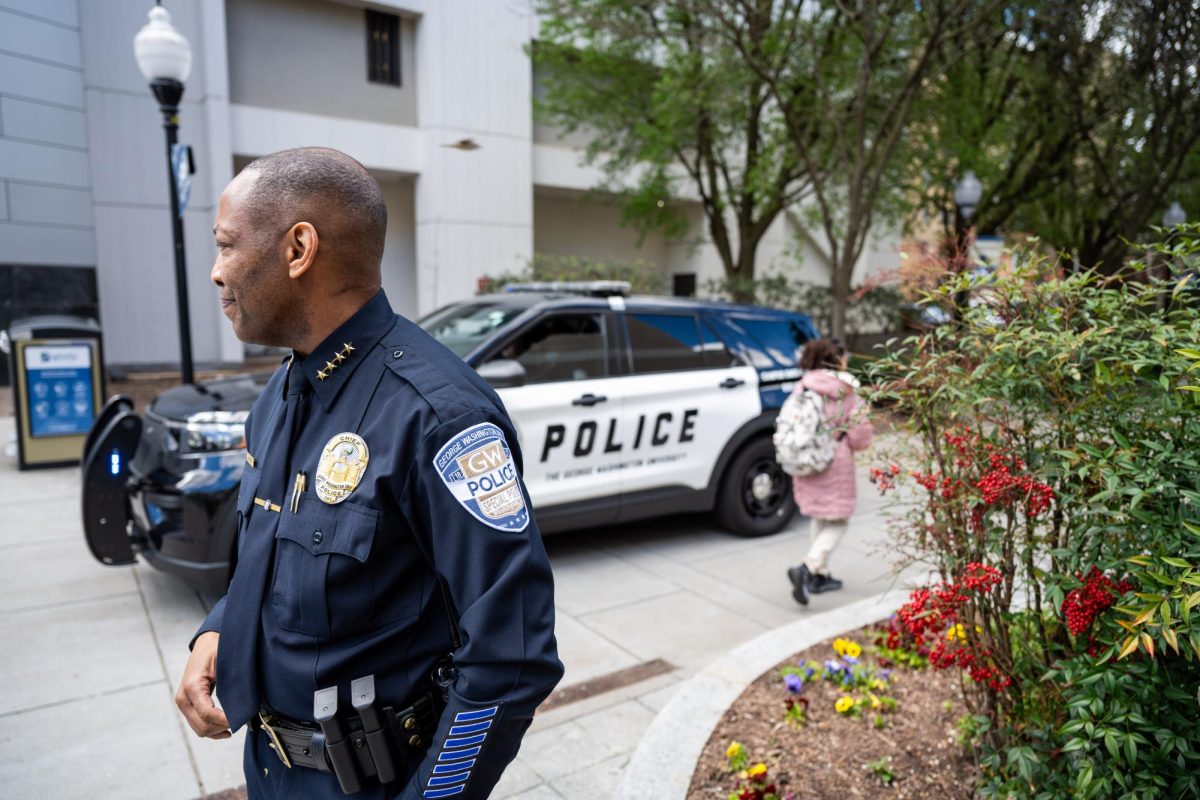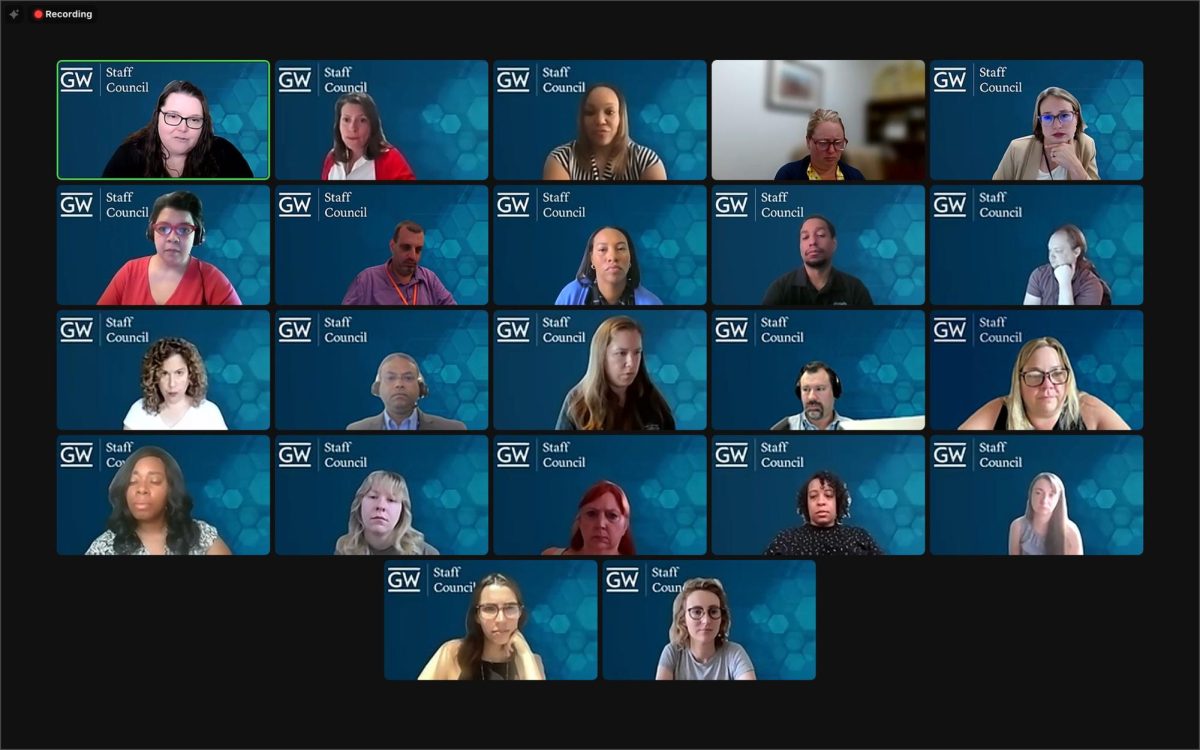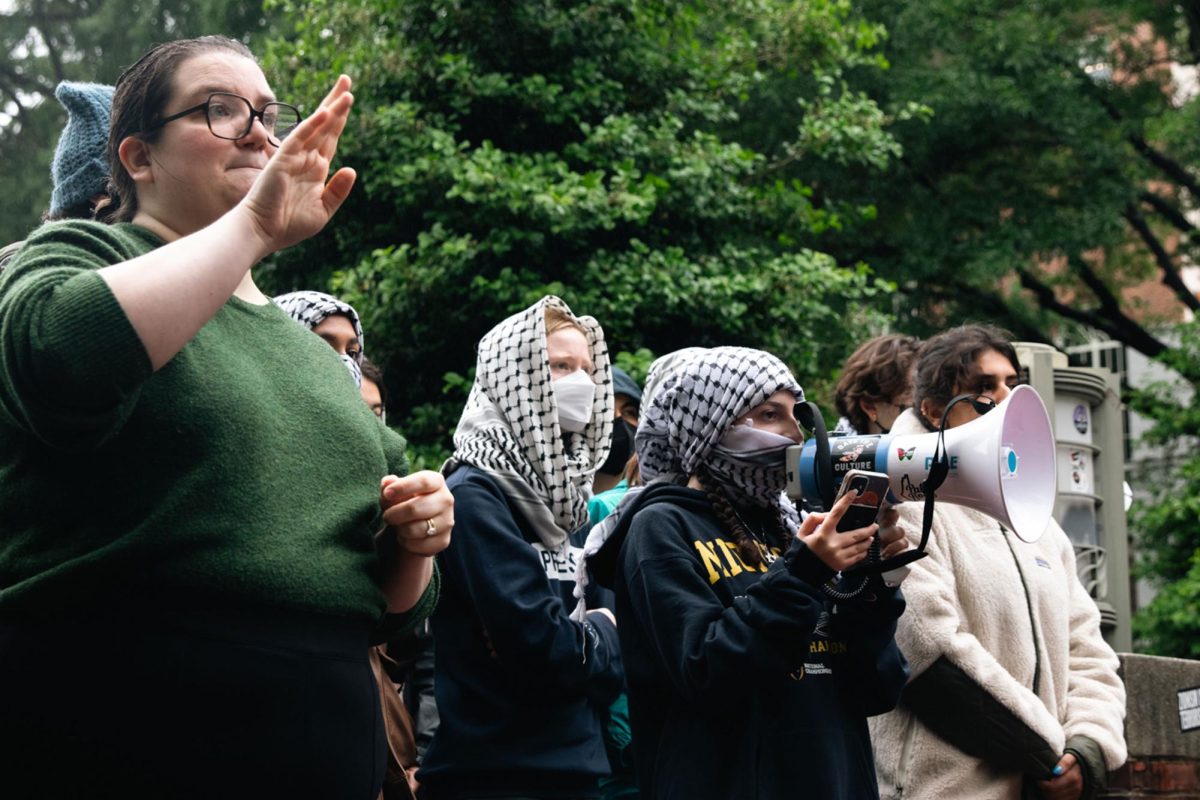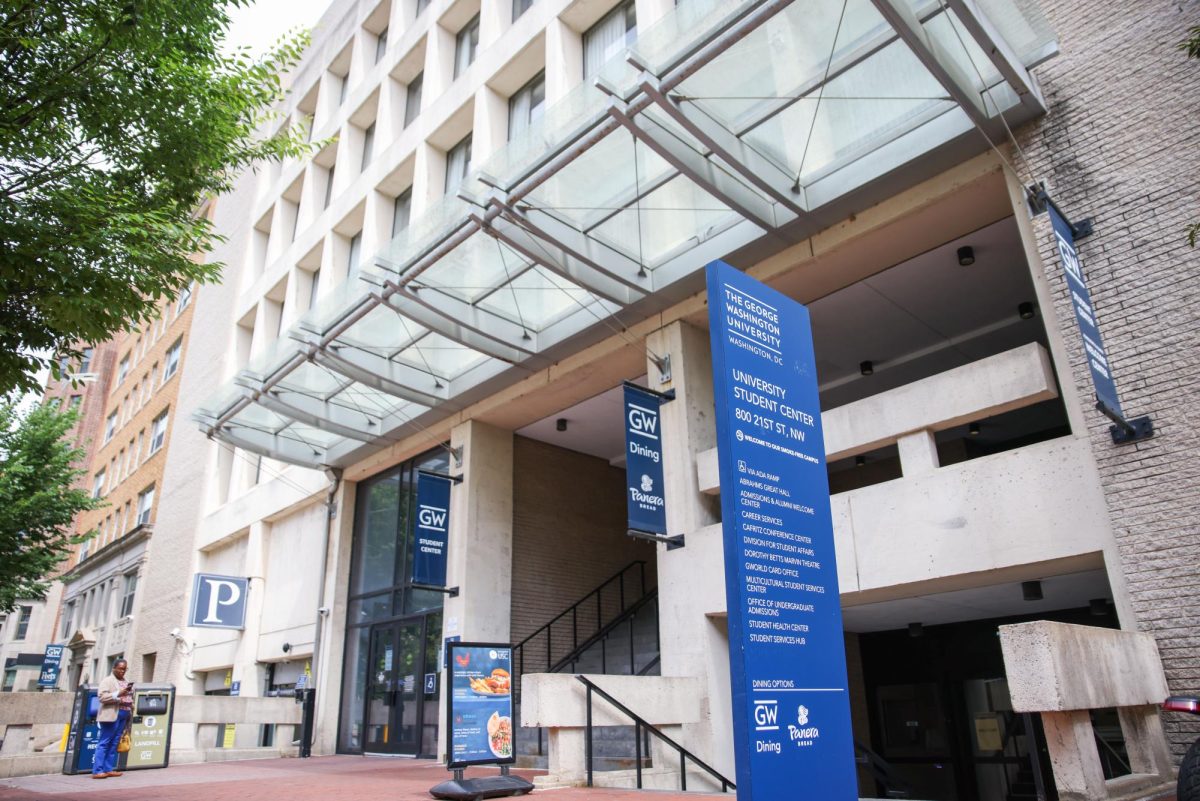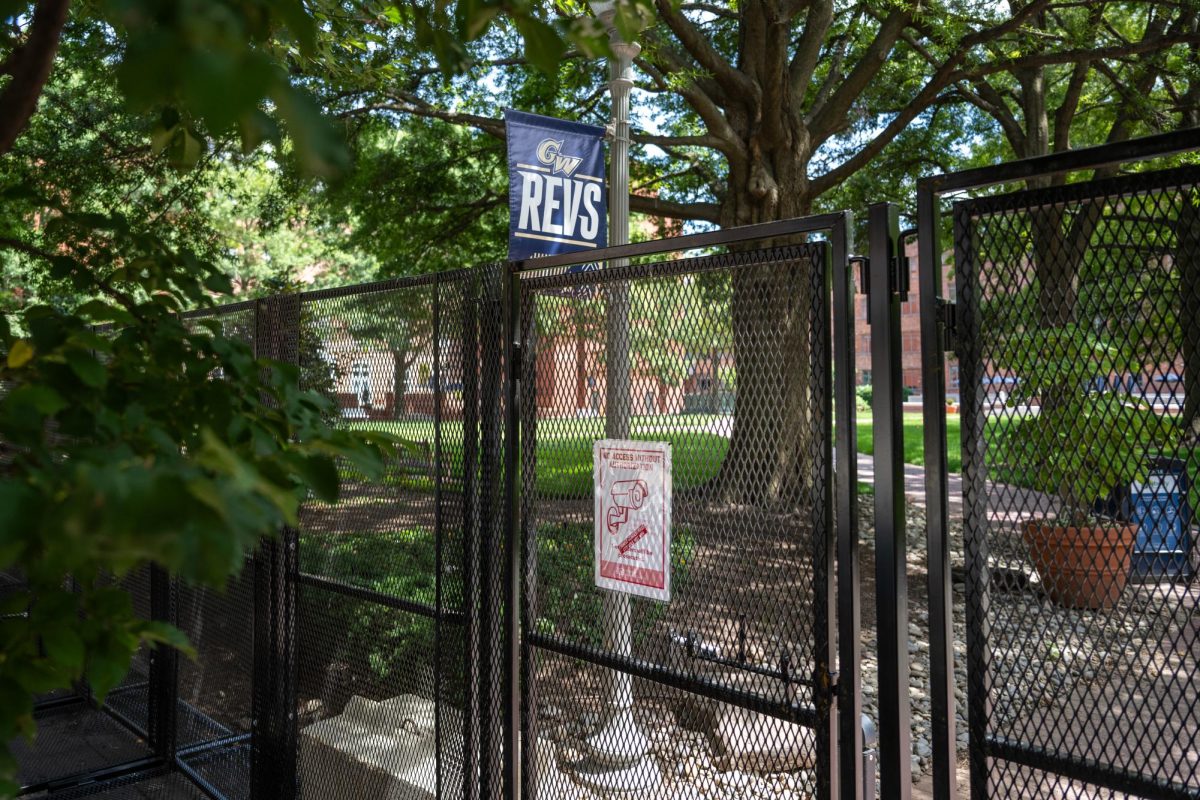Officials have reported GW’s freshman retention rate has remained below its current 94 percent goal for more than a decade amid efforts to raise that figure to new heights via diversity and affordability programs.
Provost Chris Bracey said at a Faculty Senate meeting last month that the number reached its lowest point in the past 13 years with an 89.6 percent rate for the current school year, but the tally is still on par with the “top 50” universities’ retention rate, according to the Annual Core Indicators Report. He said GW’s nearly 90 percent retention rate is outperforming both the 81 percent national retention rate average for private, four year universities and the 76 percent average national retention rate for all universities in the United States.
He said a recent U.S. News & World Report comparison of the average freshmen retention rate places GW in the top 5 percent of the 1,452 U.S. colleges and universities included in their rankings. Bracey said GW will work to strengthen its freshmen retention rate going forward with newly implemented diversity and affordability efforts like “Open Doors: The Centuries Initiative for Scholarships and Fellowships,” launched in 2021 to increase financial aid for Pell Grant recipients by about $2 million annually because officials “aspire” to continuously improve the retention rate.
“The University aspires for continual improvement for all of our students and our programs,” Bracey said in an email last month. “This is reflected in our high goals and planning efforts. The University’s focus on academic excellence, diversity and affordability has led to a number of new and expanded student support programs.”
Bracey declined to comment on why the retention rate has stayed below the 94 percent goal since 2014. The Class of 2013’s freshmen retention rate of 93.1 percent is the highest reported retention rate in the past 13 years.
Experts in higher education said in-person courses that encourage tighter bonds with faculty will compensate for the loss of in-person interaction during the early stages of the pandemic and help retain freshmen students looking for a more personal education than their virtual experiences in high school.
Sylvia Hurtado, a professor of higher education at the University of California, Los Angeles, said GW can meet the goal of 94 percent retention if they work to improve the freshmen experience by strengthening faculty-student relationships, introducing students to campus life and providing them with academic support. She said stronger bonds between students and faculty will clarify how students can be successful at GW and entice students to stay for another year.
“Certainly, if students don’t return, that’s certainly a problem,” Hurtado said. “It affected lots of institutions and so not just your own but many institutions.”
She said universities should offer more advising directed toward first-generation college students to improve retention rates because they depend on the university for resources that they may not be able to get from their families. She added that some low-income students who try to hold multiple jobs and take classes become overwhelmed and drop out of school, so universities should try to offer federal work-study positions that allow low-income students to have a job that applies to their field of study.
Columbian College of Arts and Sciences officials launched a first-year experience class in August in an effort to prepare for their academic and professional careers.
“It’s a whole range of services that some of these students may need,” Hurtado said. “I would emphasize that to really improve your range you need to really target the students who have an extremely high promise but also may have more challenges than other students.”
Charles Lu, the associate dean of diversity and inclusion at Johns Hopkins University, said GW could reach its goal of 94 percent retention in the next few years if it maintains in-person student life programming because current students have already experienced many hybrid and virtual events. He said undergraduate students still feel more “isolated” than students before the pandemic because of difficulty transitioning from virtual or hybrid instruction and events to in person.
“Universities like GW need to make more of a concerted effort and have more deliberate thought and strategy in terms of how to engage students in a more meaningful way,” he said.
Jared Tippets, the director of student affairs at Southern Utah University, said universities should focus on building more programs centered around career development, community and tuition reduction to increase freshmen retention.
“We’re slow in higher education to adjust the way we present information and the way we help to respond to what students are looking for,” he said. “But those are the types of things that we have to think about if we’re going to keep the students that we enroll.”
Students who transferred from GW after their freshmen year said they chose to leave the University in search of a more “traditional” campus and degree programs applicable to their interests.
Caroline French, a sophomore environmental science major at Northwestern University who transferred after her freshman year at GW last year, said she struggled to adjust to Foggy Bottom’s open campus because the lack of borders did not have the same community feel of a closed campus.
“I went into it expecting to be able to adjust better to being so independent,” French said. “It was really hard for me, like, not knowing what I wanted to do and also not feeling like there was like a central campus community.”
French said she applied to GW as an international affairs major but quickly realized she didn’t want to keep pursuing it. She said she contemplated switching majors to environmental science before deciding to transfer because other universities like Northwestern had stronger programs.
“I hadn’t figured out that I wanted to do environmental science,” French said. “I was going to do stats, and I ended up being a little bit underwhelmed by the variety of stats classes [GW] had.”
Akshey Mulpuri, a sophomore industrial and labor relations major at Cornell University who transferred after his freshman year at GW, said he was interested in GW because of its close proximity to politics compared to other D.C. universities like American University. He said he is interested in studying labor, and GW lacked a program specializing in labor relations, which ultimately led him to look into Cornell’s program.
“I don’t regret going to GW,” Mulpuri said. “I made some great memories and met some great people, but I realized I don’t know if this is the place where I want to study something for four years.”


